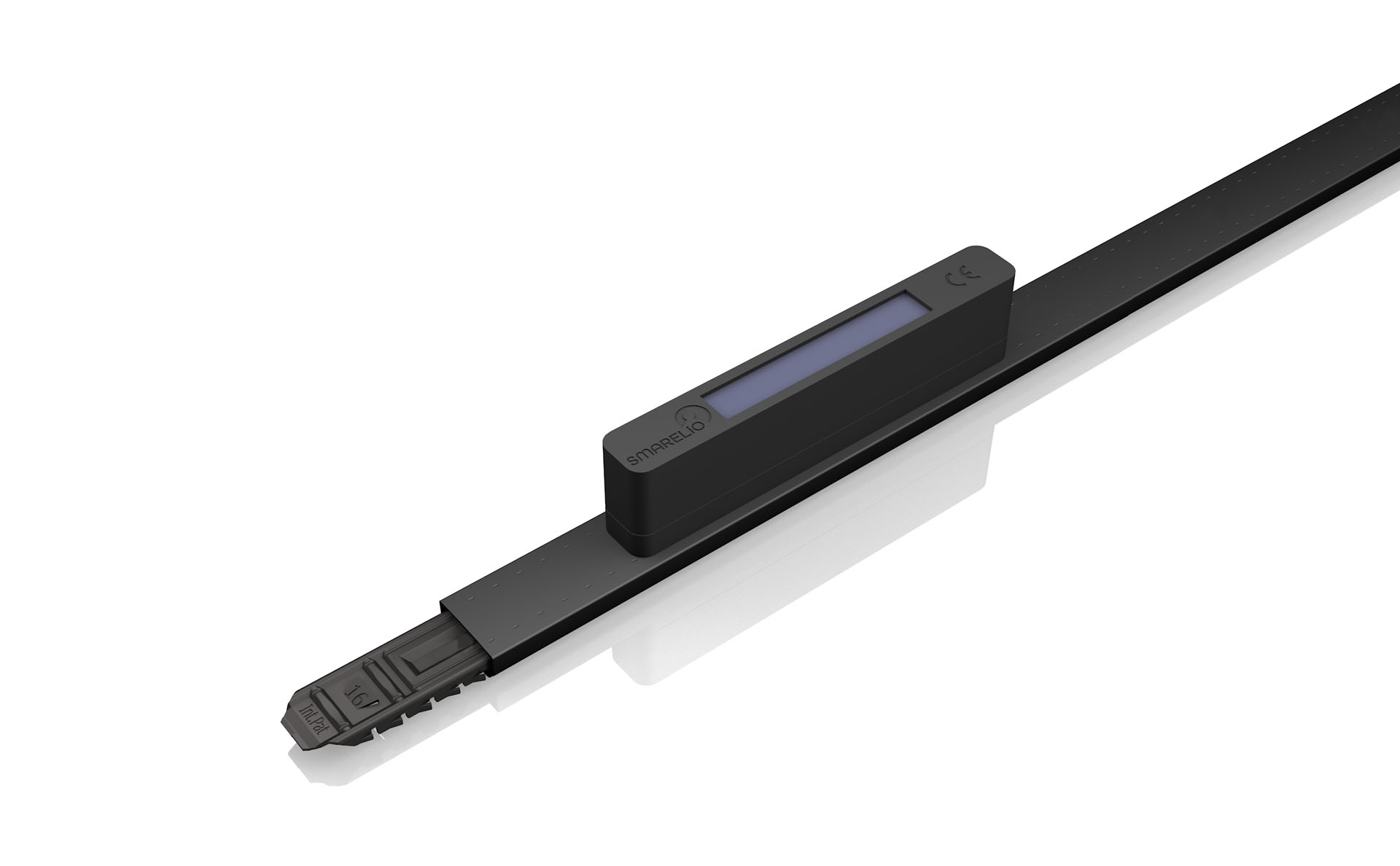The idea is ingenious, the implementation was complex, the clever result inspires: With SMARELIO Protect, EK presents a completely new monitoring technology for facade glass. A sleek, slim module between the insulating glass panes registers break-in attempts and reports any irregularities to smart home and alarm systems.
Did I lock all the windows when I left the house? And how will I know if someone is tampering with the windows? The new answer to such everyday worrying questions is called SMARELIO Protect. The small, wireless and self-sufficient sensor detects the tilt of a window just as reliably as glass breakage and vibration – and immediately triggers an alarm in these cases. This runs, for example, on a smart home cell phone app, which can also be used to check at any time whether a window is closed or tilted.
When EK came up with the idea of an integrated alarm sensor, the first approach was to integrate a data carrier into a longitudinal connector. However, it quickly became apparent that the shielding in the profile was too strong. Consequently, the radio electronics had to come out of the profile – and thus also out of the connector. The next design brought the solution: the circuit board is now installed on the so-called spacer, the profile in the space between the panes. By placing it on the spacer frame, the innovative technology can be combined with the proven EK connecting elements.
EK cooperated with the “Glaszentrum Magdeburg” (GZ) and the Chemnitz Mechanical and Plant Engineering Institute (ICM) in the development. “GZ came up with the idea of an ‘invisible alarm spider’ across the entire window area, while ICM developed the electronics,” reports Dominic Vieth, Technical Sales and Project Manager at EK. “The alarm spider is implemented by a low voltage field circuit lasered onto the insulating glass. Alternatively, silver foil or silver putty can be used to transfer the voltage from the module to the insulating glass.”
EK also took over the design of the housing in which the electronics module can be accommodated. To enable the entire unit to be installed on spacer widths from 12 millimeters, the engineers redesigned the circuit board several times. In the end, it is somewhat longer and lower than in the first draft.
The technical requirements were only one side of the coin – the visual impact was just as important to the developers: “We were aware that the plastic housing would remain visible in the window. That’s why we wanted an appealing design in the style of modern Apple products,” Dominic Vieth continues.
EK relies on the EnOcean wireless standard so that SMARELIO Protect can fully exploit its advantages. It communicates with all common smart home and alarm systems. The energy supply is remarkable: Initially, the technicians at the ICM had envisaged one large solar cell – in the course of development, this solution was replaced by two small solar cells that achieve almost twice the power and are barely visible. Thanks to a memory that has undergone constant development, SMARELIO Protect remains ready for use even up to ten days without exposure to light.
Speaking of ready for use: Thanks not least to the positive results of a long-term test, SMARELIO promises a service life of at least 15 years. The smart component passed the electromagnetic compatibility (EMC) test as well as the fogging test (see also the article “Fogging” in EK Connect No. 41).
“For insulating glass manufacturers, window manufacturers, electrical engineers, equipment manufacturers and also building owners, this innovation is a milestone,” Dominic Vieth is convinced.
smarelio.kronenberg-eduard.com
EnOcean – safe and resource-saving
The EnOcean wireless standard is internationally standardized as ISO/IEC 14543-3-10 and can therefore be used like Wi-Fi or
Bluetooth can be used everywhere. It is specially optimized for wireless solutions with particularly low energy consumption, which is covered by energy harvesting (see below). Interoperability is one of the main advantages of the EnOcean wireless standard, as are low power consumption, high reliability and a wireless range of up to 300 meters in open spaces and around 30 meters in buildings.
It was developed by the company of the same name from Oberhaching near Munich – a specialist in resource-saving energy harvesting technology for the Internet of Things (IoT) for more than 20 years. This means that the wireless switches and sensors obtain their energy from the immediate environment – from movement, light or temperature differences. You do not need batteries or cables.

